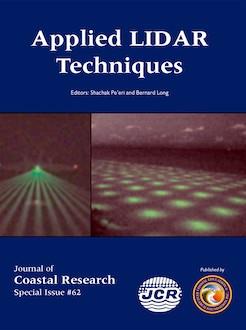Advances in remote-sensing technology have led to its increased use for posthurricane disaster response and assessment; however, the use of the technology is underutilized in the recovery phase of the disaster management cycle. This study illustrates an example of a postdisaster recovery assessment by detecting coastal land cover, elevation, and volume changes using 3 years of post-Katrina hyperspectral and light detection and ranging data collected along the south shore of Lake Pontchartrain, Louisiana. Digital elevation models and basic land-cover classifications were generated for a 34-km2 study area for 2005, 2006, and 2007. A change detection method was used to assess postdisaster land-cover, elevation, and volume changes. Results showed that the vegetation classes had area increases, whereas bare ground/roads and structures classes had area decreases. Overall estimated volume changes included a net volume decrease of 1.6 × 106 m3 in 2005 to 2006 and a net volume decrease of 2.1 × 106 m3 in 2006 to 2007 within the study area. More specifically, low vegetation and bare ground/roads classes had net volume increases, whereas medium and tall vegetation and structures classes had net volume decreases. These changes in land cover, elevation, and volume illustrate some of the major physical impacts of the disaster and ensuing recovery. This study demonstrates an innovative image fusion approach to assess physical changes and postdisaster recovery in a residential, coastal environment.
How to translate text using browser tools
1 March 2011
Post-Katrina Land-Cover, Elevation, and Volume Change Assessment along the South Shore of Lake Pontchartrain, Louisiana, U.S.A.
Molly K. Reif,
Christopher L. Macon,
Jennifer M. Wozencraft
ACCESS THE FULL ARTICLE
change detection
Hurricane Katrina
Joint Airborne LIDAR Bathymetry Technical Center of Expertise
Lake Pontchartrain
land cover
LIDAR
New Orleans





